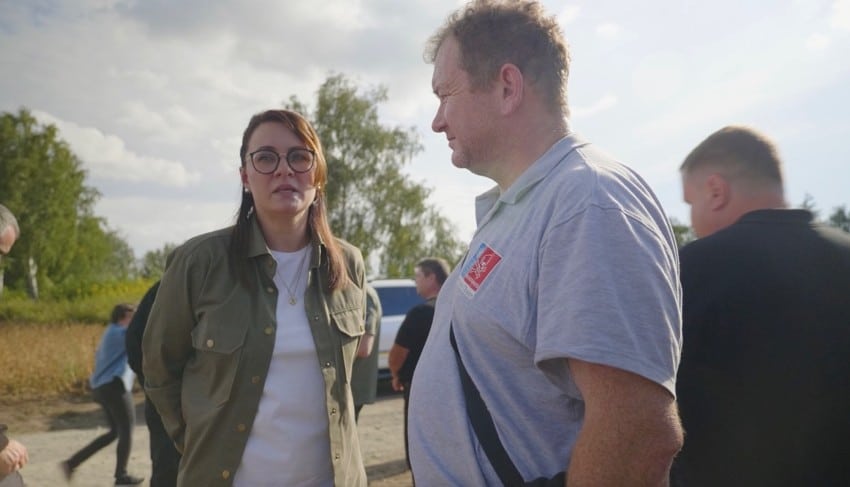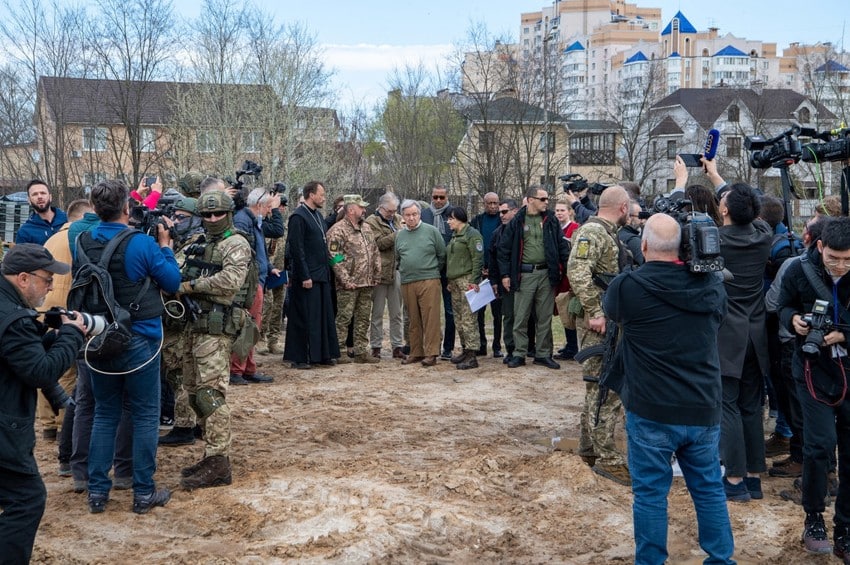“Loss of life.
Loss of home.
Loss of sense of security.
Loss is the big feeling here.”
Dennis Brown, Resident and Humanitarian Coordinator for Ukraine, in her interview with UN News.
When Russian troops launched their full-scale invasion of Ukraine in the early morning of 23 February 2022, cardiologist Tetiana Korinets’ wishes to become a mother vanished. It was 5 AM, and the sirens started blaring. The Antonov airport in Hostomel was under attack.
As a result, Tatiana and her circle of friends postponed the idea of motherhood due to their fear of war and inability to ensure a secure home for their children. However, one day, “habit” arrived.
“We must live in the present; we don’t know what will happen tomorrow,” Tetiana’s present is her baby, whom she tucks in with her partner at the Uman district hospital, where UNFPA provides life support for mothers and babies.
Violation of International Humanitarian Law
Hospitals have been military targets since the beginning of the invasion. The UN has recorded 1500 verified attacks on healthcare facilities. Nearly half of those facilities have been rendered inoperable in some areas east and south of the country.
At UNFPA Ukraine, they know the stories behind each attack on maternity hospitals. The most recent, on 14 February, killed a pregnant woman at the hospital in Selydove, Donetsk.
“Our hearts ache for the loss of a pregnant woman and others who died after tonight’s attack on a medical centre in Selydove,” said Massimo Diana, UNFPA’s representative in Ukraine. “Attacking a hospital at a time when a new life is beginning is an act of cruelty for which there can be no justification.”
The need for urgent help persists.
As the conflict drags on, humanitarian needs are perpetuated and growing. Two years after the invasion began, OCHA estimates that there are more than 14.6 million people, about 40% of the Ukrainian population, who will need humanitarian assistance in 2024. In 2023 alone, the humanitarian community assisted 11 million people nationwide.

“Even though there is less and less talk about Ukraine, the situation here in the country is becoming increasingly extreme. And we have seen it this past year. As the war ravages towns and villages close to the front line, humanitarian needs in these areas are reaching catastrophic levels,” Saviano Abreu, OCHA’s Head of Communications and Spokesperson in Ukraine, explains from Kyiv.
Unexploded shells and landmines litter thousands of kilometres of land, which is another consequence of the war. At present, 1/3 of Ukraine’s territory is impacted.
This situation has a global impact as minefields cause grain shortages and impact other famine-stricken areas of the world. “For me, not doing my job means children starving in Somalia or Afghanistan,” explains Paul Heslop, Chief Technical Advisor for the Mine Action Programme at UNDP Ukraine.
“I’ve been working in the industry for about 30 years, and for me, really everything I did before Ukraine is a dress rehearsal,” Paul says as he explains, with numbers, the brutal impact of mines. “Even with the rule of thumb that 10% of the system fails. If you drop 30,000 shells a day, that’s 3,000 bombs daily that haven’t detonated. When the conflict lasts 1,000 days, then we are talking about 3 million explosive devices.”

The United Nations is working with the Government of Ukraine and its partners to address the threat of unexploded ordnances, landmines and cluster munitions. UN mine action efforts reached nearly 3.5 million people in 2022 and 1.2 million by 2023.
UN Diplomacy
In these two years of full-scale war, the United Nations has supported all diplomatic efforts aimed at achieving a just and lasting peace in Ukraine in accordance with the UN Charter, international law and relevant General Assembly resolutions. UN Secretary-General Antonio Guterres has reiterated his readiness to support the parties should they request UN assistance in negotiations or dialogue.

The Secretary-General has travelled three times to Ukraine: the first on 28 April 2022, where he visited sites of suspected war crimes in Ukraine, on 19 August 2022, and finally on 8 March 8 2023. He also met with Vladimir Putin in Moscow on 26 April 2022, exercising his “good offices” mandate.
The Black Sea Initiative and the Memorandum of Understanding on the facilitation of Russian food and fertilizer exports – brokered by the UN and Turkey in July 2022, were a lifesaver for global food security:
-The initiative enabled the safe transport of nearly 33 million metric tons of food from Ukraine to 45 countries on three continents.
-20% of food products, including 42% of wheat exports, exported under the initiative went to low- and low-income countries.
-7% of exported wheat was purchased by WFP, which allowed for transport of 725,000 tons to people in need in Afghanistan, Ethiopia, Kenya, Somalia, Sudan and Yemen.
Ultimately, the initiative contributed to the sustained reduction in global food prices. By June 2023, the FAO food price index had fallen more than 23% below the all-time high reached in March 2022.
Figures
- More than 30,000 civilian casualties, including more than 10,000 dead. These are only the figures confirmed by the UN. The actual figure is likely higher.
- More than 6.4 million refugees and some 3.7 million people are internally displaced. Almost a third of the population has been forced to flee their homes, including more than half of Ukrainian children.
- According to the World Bank, poverty rates increased from 5% to 24% in 2022, putting 7.1 million Ukrainians below the poverty line.
- Nearly 4,000 schools, preschools and other educational facilities have been damaged or destroyed. Donetsk oblast is the worst hit, with 80% destruction.
- Only one-third of Ukrainian children attend in-person classes.
- More than 3.3 million people – including 800,000 children – living along the front line are estimated to need emergency assistance.

